ESG and Climate Accountability Reporting for U.S. Data Centers
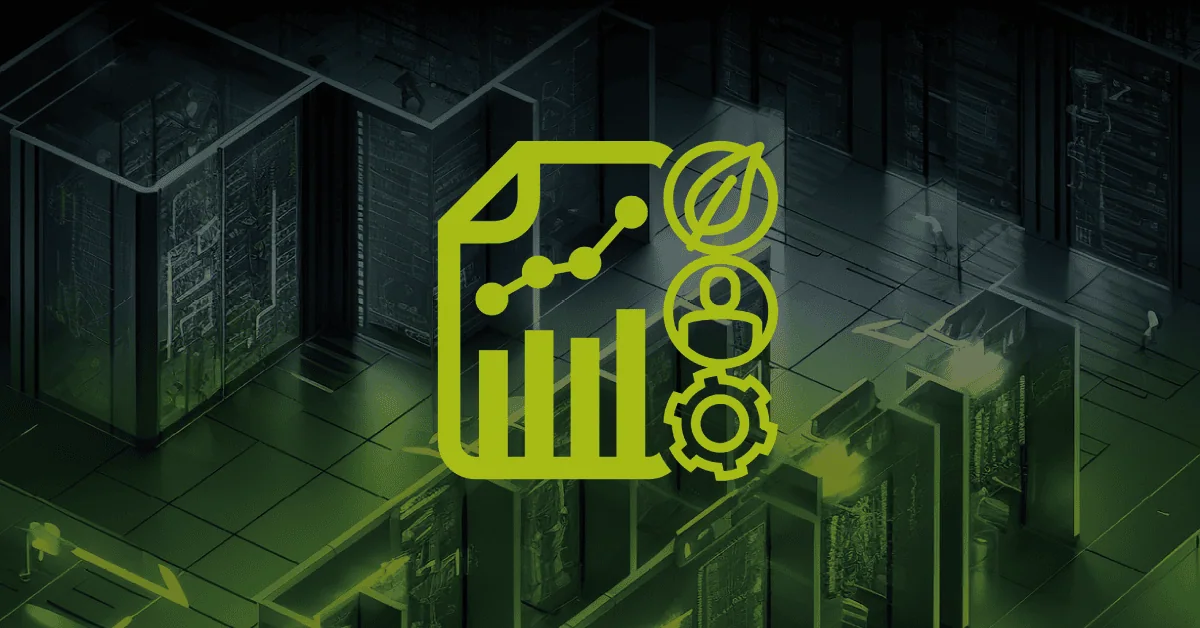
Environmental, Social and Governance (ESG) issues are rapidly evolving from a largely corporate and social responsibility issue into a core compliance challenge for U.S. data center operators.
ESG is Evolving
Driven by global and domestic regulations, businesses are increasingly operating in an ESG-focused world, with organizations facing intense pressure to reduce energy and carbon consumption as part of their broader sustainability commitments. However, substantial regulatory changes have been introduced, both in the U.S. with California’s Senate Bill SB 253 and SB 219 as well as globally with regulations such as the European Union’s Corporate Sustainability Reporting Directive (CSRD), and the European Commission’s Energy Efficiency Directive (EED). These regulatory regimes
will transform ESG from being primarily a responsibility tied to social and corporate matters into a crucial aspect of compliance.
What’s driving these changes, and how will they impact data center operations teams that are already facing resource challenges?
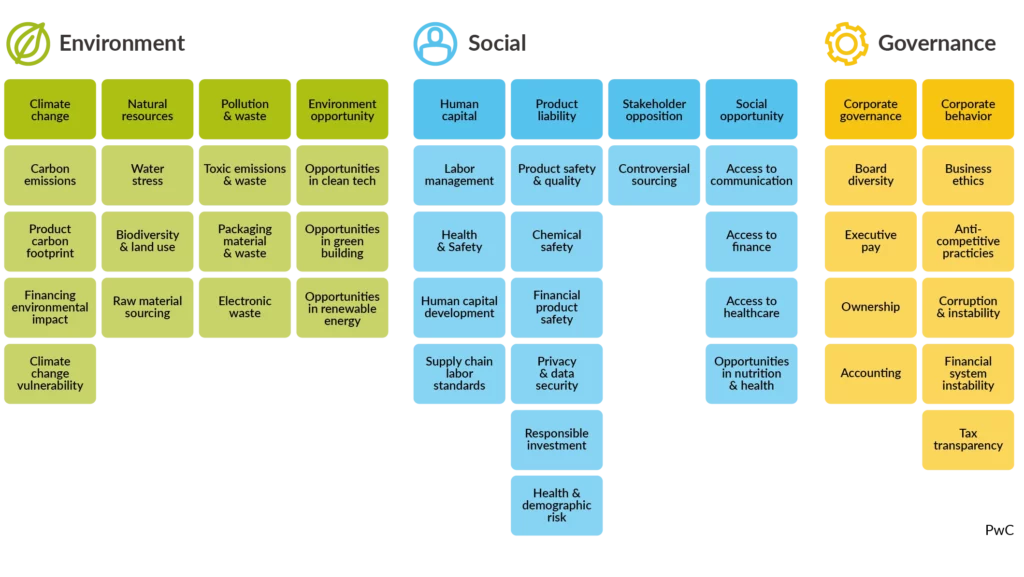
Establishing New Standards for Data Center Sustainability Reporting
Originally established in 2007, the Power Usage Effectiveness (PUE) metric has long been considered a standard for monitoring power efficiency in data centers. Over the first half of PUE’s lifecycle, measurements continued to fall as data centers became more efficient in powering IT equipment. Over the last five years, however, the rate of improvement has slowed, perhaps suggesting that PUE is just one of many ways of tracking a data center’s performance.
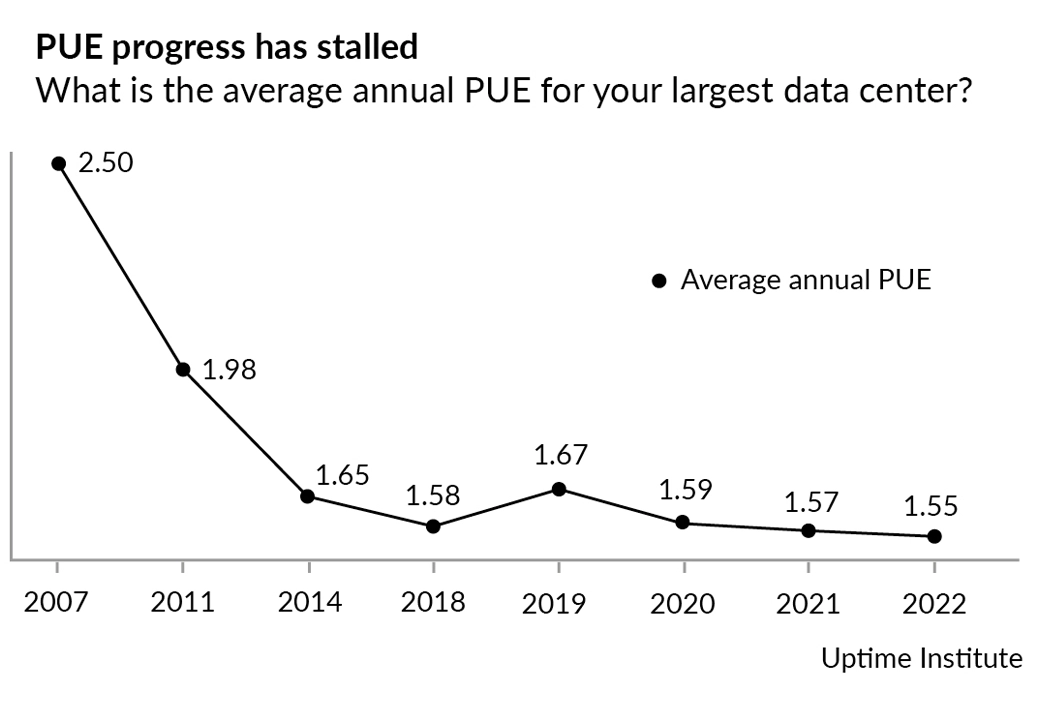
While PUE continues to hold its significance, it’s just one piece of a series of metrics that are needed to present a more rounded view of a data center’s sustainable performance. PUE is one of a series of globally standardized Key Performance Indicators (KPIs) defined and published by the International Standards Organization (ISO). This ISO/IEC 30134 series of standardized data center resource efficiency KPIs serves as a catalyst for improving data center operations. In addition to PUE, the ISO/IEC 30134 series includes a Cooling Efficiency Ratio (CER), a Carbon Usage Effectiveness measure (CUE) and a Water Usage Effectiveness metric (WUE). Other relevant elements include an Energy Reuse Factor (ERF) and a Renewable Energy Factor (REF). Together, these ISO/IEC 30134 measurements provide a valuable foundation for organizations seeking to measure their ESG Scope 2 performance.
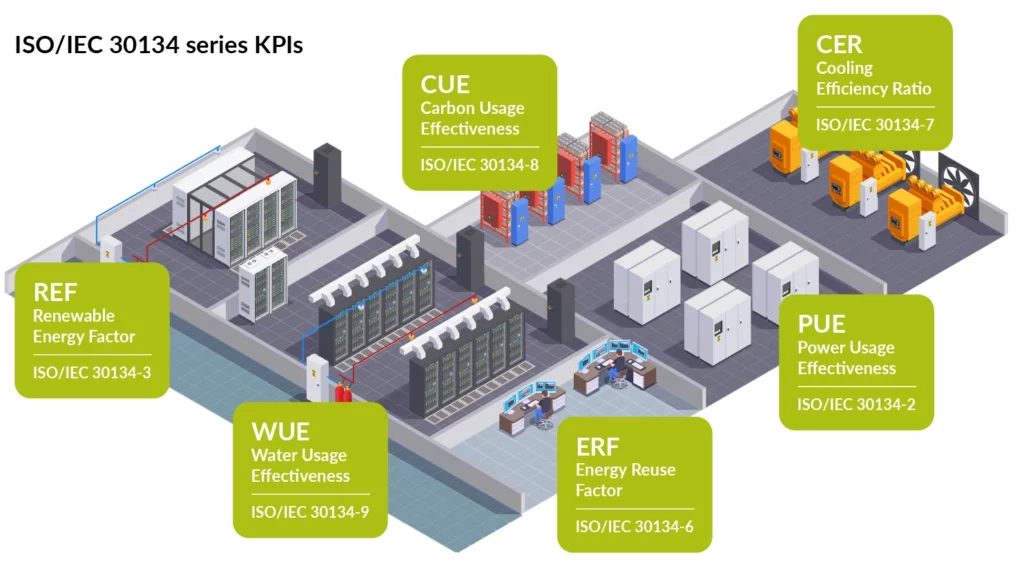
California’s Climate Accountability Laws’ Impact on Data Centers
California’s Senate Bill 253 (SB 253), the Climate Corporate Data Accountability Act, represents a significant shift in corporate sustainability regulations. Amended by SB 219, this law requires businesses operating in California to report their Scope 1, 2, and 3 greenhouse gas emissions. Scope 1 covers direct emissions, Scope 2 covers emissions from purchased energy, and Scope 3 includes all other indirect emissions throughout the supply chain.
SB 219 delayed the deadline for the California Air Resources Board (CARB) to adopt implementing regulations to July 1, 2025, but reporting deadlines remain unchanged. Businesses with over $1 billion in annual revenues must begin reporting Scope 1 and 2 emissions starting in 2026, with Scope 3 disclosures to follow in 2027 on a timeline set by CARB.
With U.S. data center power consumption expected to nearly double by 2030, SB 253 reporting and regulations will notably impact data centers, pushing them toward greater transparency and accountability in their environmental impact. This aligns with a global trend where ESG regulations have surged by 155% over the past decade, reflecting an increased focus on sustainability.
Data centers face challenges with outdated data management practices, such as using spreadsheets, which may not meet the precision required by SB 253 reporting and other regulations like the CSRD and EED regulations in Europe.
EkkoSense’s AI-driven solution, EkkoSoft Critical, addresses these challenges by offering real-time data integration and automated ESG reporting, simplifying compliance and enhancing operational efficiency. Recognized as ESG Technology of the Year, EkkoSoft Critical is designed to help data centers not only meet SB 253 and SB 219 requirements but also excel in sustainability reporting accuracy and efficiency.
As California leads in climate accountability, its evolving regulations signal a broader global movement toward stringent environmental regulations, urging data centers to adapt and innovate in their sustainability practices.
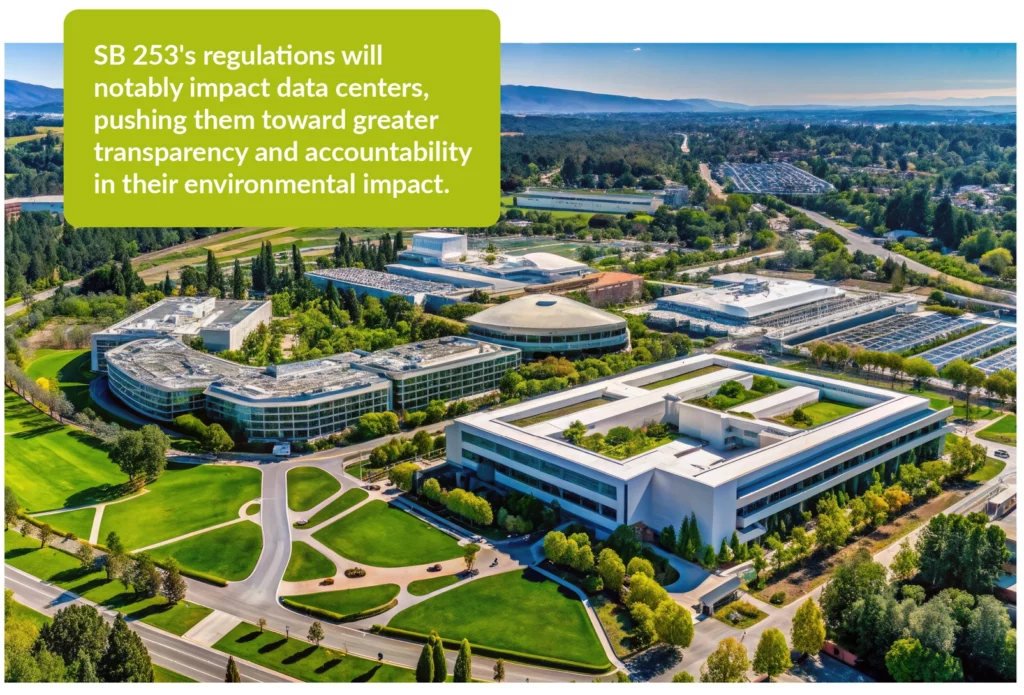
The Corporate Sustainability Reporting Directive (CSRD)
The European Corporate Sustainability Reporting Directive (CSRD) is set to bring significant changes to how businesses report their environmental and social impacts. While it may be European in origin, the CSRD has far-reaching implications for many U.S.- based companies.
The CSRD is recent legislation aimed at improving transparency and accountability in corporate sustainability reporting by compelling large companies and listed SMEs to regularly report their environmental and social impacts, enabling investors and stakeholders to gauge a company’s societal and environmental effects.
The CSRD’s wide-ranging impact touches various business categories relevant to U.S. companies:
- Large Undertakings: This encompasses European companies on EU-regulated markets and subsidiaries of U.S. parent companies. They meet specific criteria related to balance sheet total, net turnover or employee count.
- Small and Medium-Sized Enterprises (SMEs): These are U.S.-based subsidiaries with securities listed on EU-regulated markets. Criteria differ for small and medium- sized entities based on factors like balance sheet total, net turnover and workforce size.
- U.S.-Based Companies: For U.S. companies, CSRD applies if they’ve generated substantial EU turnover and have sizable EU-based subsidiaries or listings. Understanding which category your U.S. business falls into is essential for CSRD compliance.
The CSRD brings a unique requirement for companies to disclose their ESG impacts within their value chains, impacting customer and supplier relationships. For instance, a U.S. supplier to a CSRD-covered company may need to provide emissions data for Scope 3 GHG disclosures, emphasizing supply chain sustainability. The legislation unfolds in four stages, starting in 2024 with large U.S. firms on EU-regulated markets. By 2025, it encompasses all large U.S. companies in these markets, potentially expanding to U.S. companies with significant EU subsidiaries.
Reporting standards under the CSRD follow European Sustainability Reporting Standards (ESRS), demanding comparative quantitative data and narrative disclosures, with a first-year exemption for ease of implementation. It represents a vital shift in corporate sustainability reporting. U.S. companies in the EU or with EU subsidiaries should prepare for its impact. It aligns with the global trend toward transparency and accountability, making it vital for U.S. businesses to adapt to this evolving landscape.
And it’s not just national and international governments that are increasing their focus on sustainability reporting. For example, according to Amazon’s 2022 Sustainability Report, the company is updating its supply chain standards to require its suppliers to report their carbon emissions data and set clear emissions reductions goals. Amazon reports that Scope 3 emissions (that occur in Amazon’s value chain but that are not under its direct control) now account for over 75% of its overall emissions. As part of this initiative, Amazon also said that in selecting partners for business opportunities it would make a point of seeking suppliers that can help achieve its carbon reduction goals.
The European Union’s Corporate Sustainability Reporting Directive (CSRD) requires large companies and listed SMEs to produce regular reports on their environmental and social impact activities. CSRD will require evidence-based reporting and precise measurement of GHG data and Scope 1, 2 and 3 ESG emissions. It takes effect for large businesses and listed SMEs in 2025 with the publication of their first CSRD-compliant annual reports based on data collection that began at the start of 2024.
Additionally, under the European Commission’s Energy Efficiency Directive (EED), data centers operating in the EU that use more than 2,780 MWh of energy each year will be required to report publicly on their data center’s energy performance.
The directive introduces a reporting obligation for data center operators in the EU, with reporting on an annual basis.
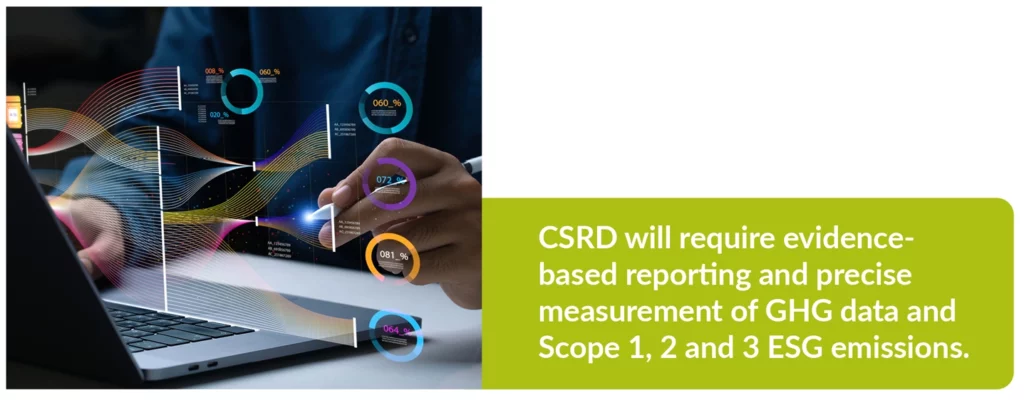
Is the Data Center Industry Prepared?
Some U.S. data center operators are gearing up for the upcoming regulatory changes, but many remain unprepared. Compliance with EED started in May 2024, requiring that data centers have been monitoring their energy use since May 2023 – a requirement that numerous data center operators were not on track to meet. Meanwhile, for CSRD compliance, data collection started in January 2024.
That’s a big deal for energy-intensive business functions such as data center operations, and it is certain that this process is going to be complex, time-intensive, and will require significant levels of financial and resource support.
The imminent implementation of new regulatory requirements necessitates comprehensive energy reporting starting next year, a particularly pressing concern for numerous organizations grappling with meeting their operational resource demands.
According to EkkoSense Research, a mere 5% of Mechanical and Electrical (M&E) teams currently engage in real-time monitoring and reporting of power and equipment temperatures at a granular, rack-by-rack level. Consequently, the ongoing aggregation of such data poses a formidable challenge.
Many companies managing their data center operations rely on conventional spreadsheets, a practice notorious for its time-consuming nature and potential inaccuracies. This presents a problem given that ESG reporting will require an auditable standards-based approach. Any deviation from the correct data collection and reporting methods will likely be uncovered during an audit. Because of this, a far greater degree of accuracy is required compared to previous practices.
Not surprisingly, this level of ESG reporting places a substantial strain on operational resources and time, imposing a significant resource burden. This challenge is compounded by the fact that many legacy DCIM and BMS tools don’t readily provide standard reporting capabilities. This becomes more complex depending on the scale of operations, including the number of rooms and sites within an estate, making it difficult to access evidence-based, real-world data that regulatory frameworks like the CSRD and the revised EED will demand. Without access to granular level sustainability reporting data, it will be challenging to answer questions about rack density, power usage, PUE measurements, and inevitable changes.
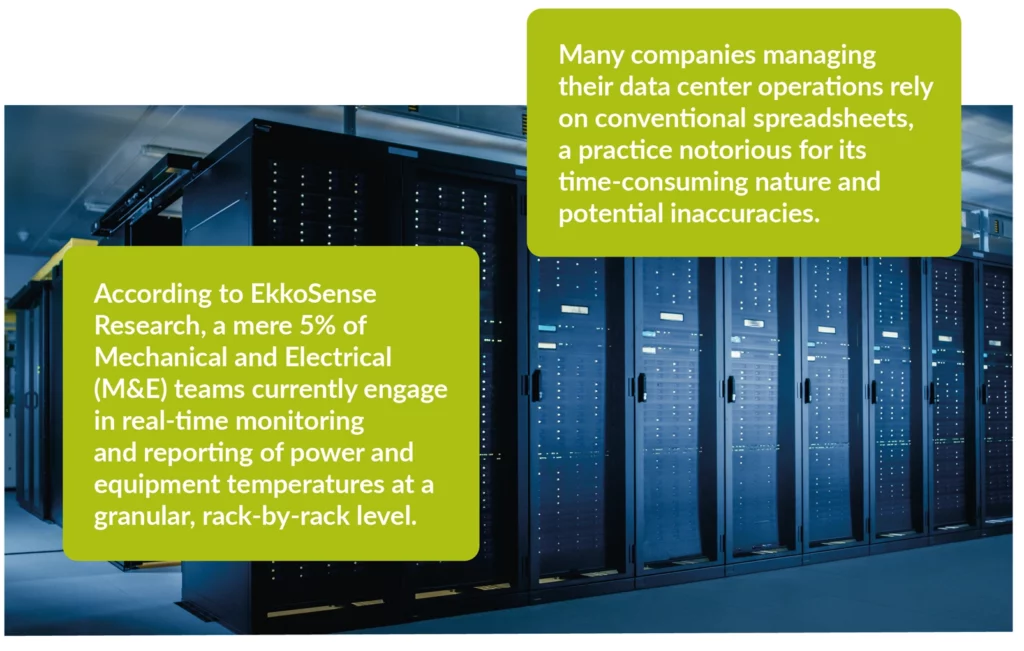
EkkoSense is Transforming Data Center Management and ESG Reporting
EkkoSense continues to set the agenda when it comes to transforming data center management and ESG Reporting, with its commitment to innovation leading the way.
left a profound impact, supporting industry leaders such as Virgin Media O2, Telehouse, and Three, reducing cooling energy waste and delivering quantifiable carbon savings. As a testament to this achievement, EkkoSense is acknowledged as an industry leader with recent award recognitions including:
- DCS Awards 2024 – Data Center Sustainability Project of the Year
- Green Business Awards 2024 – Low Carbon Industrial Project of the Year
- The CLOUD Awards 2024 – Best Environmental or ‘Green’ Use of the Cloud
- Datacloud Global Awards – Sustainable Data Center Project
EkkoSoft Critical, our Software as a Service (SaaS) offering, continues to captivate data center operators worldwide. With EkkoSoft Critical, we are proud to introduce game-changing features that revolutionize data center management and ESG reporting.
Key Features of EkkoSoft Critical:
- Embedded ESG Reporting Capabilities: One of the standout features of EkkoSoft Critical is its embedded ESG Reporting capabilities. These capabilities empower data center operations teams to automate the production of ESG and sustainability reports and metrics. The best part? It accomplishes this task at a fraction of the time and cost compared to legacy DCIM and BMS approaches, ensuring readiness for upcoming EU deadlines.
- Consolidated Estate / Enterprise Dashboard Views: EkkoSoft Critical introduces consolidated estate and enterprise dashboard views, optimizing thermal, power, and capacity management across extended data center estates. This feature simplifies data center management, providing a comprehensive view of performance that ensures resources are used efficiently.
EkkoSoft Critical is designed to make a significant impact on data center operators, helping them meet reporting deadlines with greater efficiency. The platform seamlessly integrates live data into the system, providing the granularity needed for precise decision-making. All reporting can be conveniently done from a single platform, eliminating the need for costly consultants. It’s like having an additional member of your data center team.
While current regulations mandate reporting annually, the regulatory landscape is constantly evolving, with changes such as California’s SB 219 and global directives reshaping requirements. EkkoSoft Critical stays ahead of the curve by conducting daily data aggregation, equipping operations teams with live insights to proactively meet sustainability targets and turn compliance challenges into opportunities for innovation.
As sustainability reporting becomes a core compliance requirement, EkkoSense and EkkoSoft Critical help to simplify the process for data center operations teams and colocation providers. Combining a highly visual, intuitive platform with real-time optimization of data center thermal performance, EkkoSoft Critical empowers teams to excel in the ever-changing world of data center operations and ESG compliance, including SB 253, SB 219, and beyond.
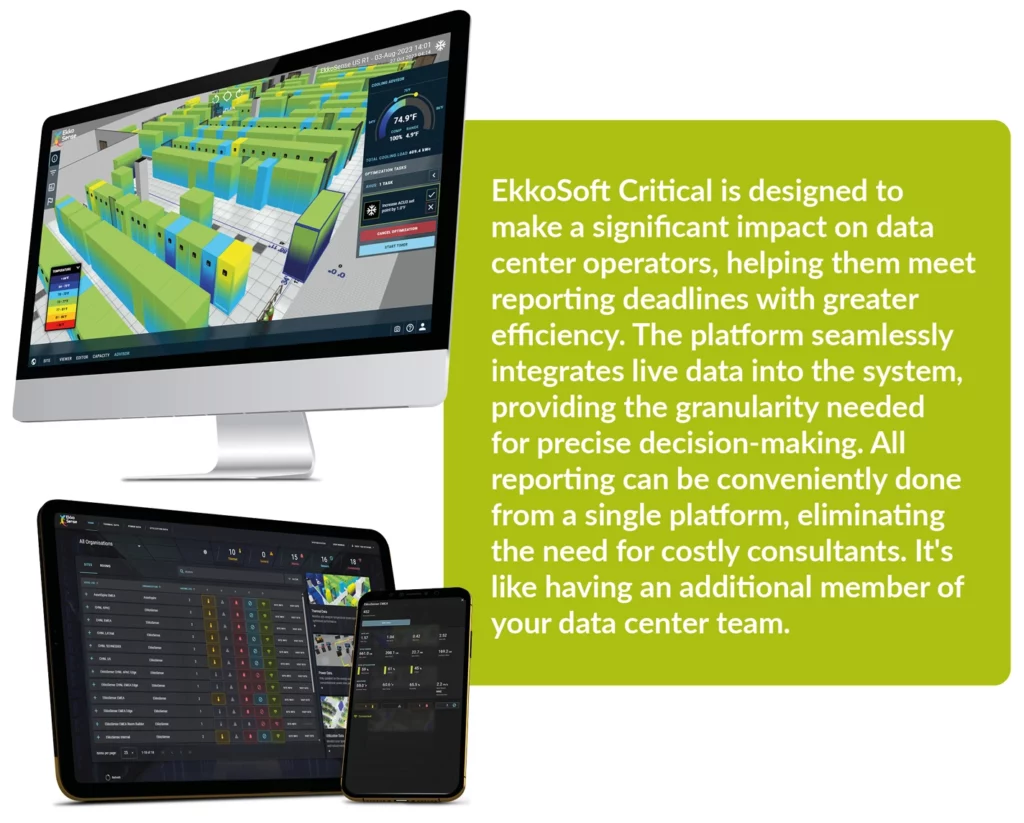

Travis Talcott
Technical Sales Lead, Americas, EkkoSense
Further reading and videos
- Article by Steve Lewis, EkkoSense Americas lead – Navigating sb 253: What California’s new law means for data centers